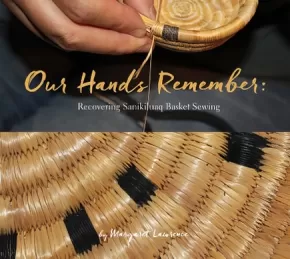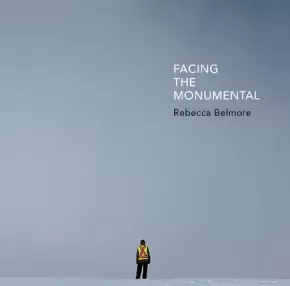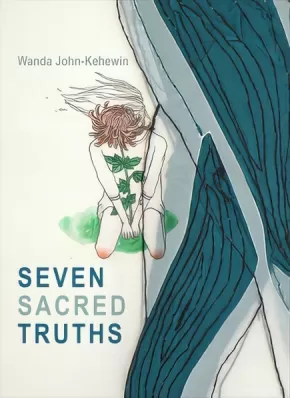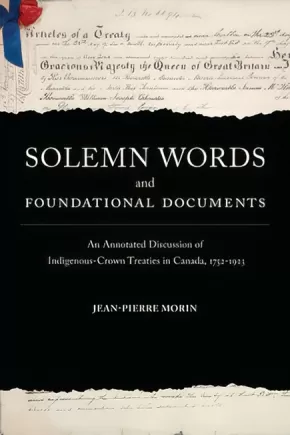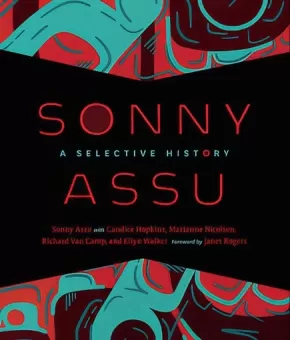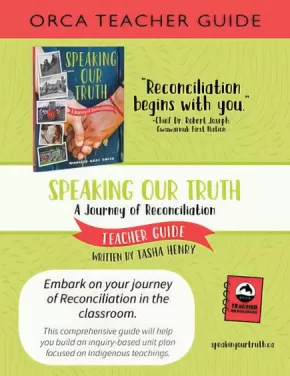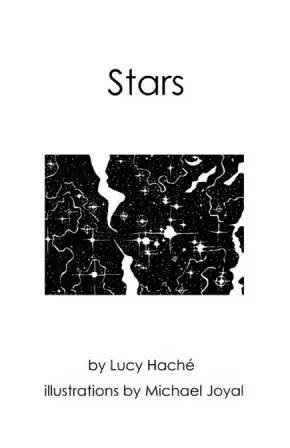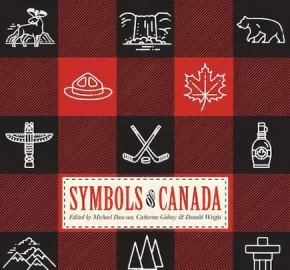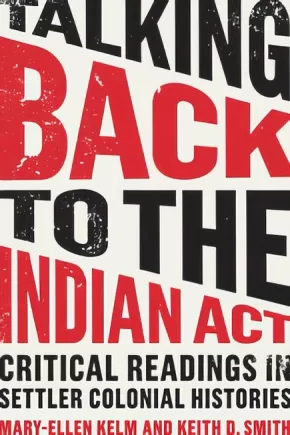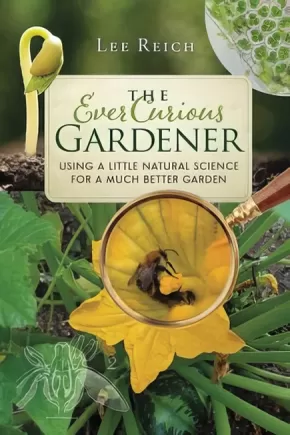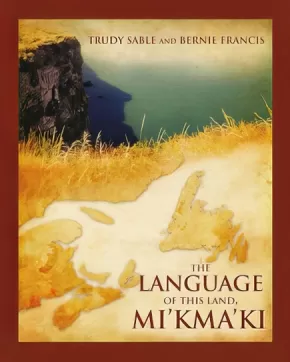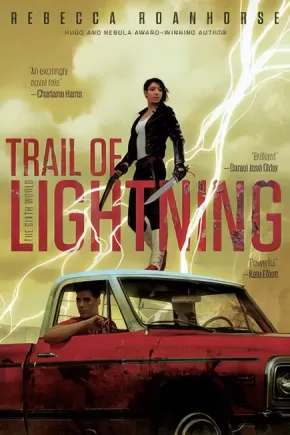
Non-Fiction
451
-
465
of
748 Results;
Sort By
Go To
of 50
Our Hands Remember: Recovering Sanikiluaq Basket Sewing
$24.95
Format:
Paperback
Text Content Territories:
Indigenous Canadian; Inuit;
ISBN / Barcode: 9781772271645
Synopsis:
Synopsis:
Sanikiluaq, a small Inuit community in the Belcher Islands region of the Far North, has a long history of artistic output. But as the demand for stone carvings grew, grass basket sewing—once a traditional skill for Inuit women—faded from the community consciousness. That was until a group of women, including educator and artist Margaret Lawrence, came together to renew the lost art of basket sewing.
In Our Hands Remember: Recovering Sanikiluaq Basket Sewing, Lawrence guides readers through creating their own grass baskets in the unique style of the Sanikiluaq region with step-by-step instructions and photographs. From tips on preparing the grass and forming even coils to the different types of embellishments, this book is accessible to all skill levels.
Additional Information
120 pages | 9.00" x 8.50" | Colour Photographs
Portraits of the North
$29.95
Artists:
Format:
Paperback
Text Content Territories:
Indigenous Canadian; First Nations; Anishinaabeg; Oji-Cree; Ojibway; Cree (Nehiyawak); Dene; Métis;
ISBN / Barcode: 9781988182414
Synopsis:
Synopsis:
This gorgeous book offers an incomparable glimpse into the experiences and history of more than one hundred First Nations and Métis elders from Canada’s North —“the last generation born on the land.” These stunning graphite pencil portraits are rendered with love, respect, and painstaking detail, along with gripping intimate profiles assembled from oral accounts and anecdotes. Their poignant facial features, lines, and creases, weathered by the harsh outdoors and a lifetime of challenges, are like badges of their remarkable achievements, sustained resolve, inspired patience, and deep-set defiance to the hardships their people have endured for generations. The masterful realism of Kuehl’s work helps uncover the tales of these seasoned individuals—their many triumphs and trials revealing in turn a greater portrait of life in the communities of Northern Canada, a compelling homage, and an enduring historical legacy. The portraits capture images of Cree, Ojibway, Oji-Cree, Dene and Métis peoples.
Additional Information
236 pages | 10.03" x 10.03"
Rebecca Belmore: Facing the Monumental
$40.00
Artists:
Editors:
Format:
Hardcover
Text Content Territories:
Indigenous Canadian; First Nations; Anishinaabeg; Ojibway; Lac Seul;
ISBN / Barcode: 9781773100968
Synopsis:
Synopsis:
Facing the monumental issues of our time.
In a 2012 performance piece, Rebecca Belmore transformed an oak tree surrounded by monuments to colonialism in Toronto's Queens Park into a temporary "non-monument" to the Earth.
For more than 30 years, she has given voice in her art to social and political issues, making her one of the most important contemporary artists working today. Employing a language that is both poetic and provocative, Belmore's art has tackled subjects such as water and land rights, women's lives and dignity, and state violence against Indigenous people. Writes Wanda Nanibush, "by capturing the universal truths of empathy, hope and transformation, her work positions the viewer as a witness and encourages us all to face what is monumental."
Rebecca Belmore: Facing the Monumental presents 28 of her most famous works, including Fountain, her entry to the 2005 Venice Biennale, and At Pelican Falls, her moving tribute to residential school survivors, as well as numerous new and in-progress works. The book also includes an essay by Wanda Nanibush, Curator of Indigenous Art at the AGO, that examines the intersection of art and politics.
Rebecca Belmore is one of Canada's most distinguished artists. She has won the Hnatyshyn Award (2009), the Governor General's Award in Visual and Media Arts (2013), and the Gershon Iskowitz Prize (2016). A member of Lac Seul First Nation, she was the first Aboriginal woman to represent Canada at the Venice Biennale. She has also participated in more than 60 one-person and group exhibitions around the world.
Additional Information
132 pages | 10.25" x 10.25" | 198 Illustrations
Seven Sacred Truths
$18.95
Format:
Paperback
Text Content Territories:
Indigenous Canadian; First Nations;
ISBN / Barcode: 9781772012132
Synopsis:
Synopsis:
Seven Sacred Truths explores the perspective of an Indigenous Woman on a continuous journey of healing from trauma.
Seven Sacred Truths presents a powerful exploration of an Indigenous woman's healing journey. Seeing the world through "brown" eyes, poet Wanda John-Kehewin makes new meaning of the past, present, and future through a consideration of Love, Wisdom, Truth, Honesty, Respect, Humility, and Courage. By sharing her views on these Seven Sacred Truths and what they meant to her growing up, John-Kehewin instigates a therapeutic process of restoration and transformation. Her Seven Sacred Truths uncovers new meaning in the written word - meaning that can be shared with others who have lived trauma or who want insight into it. John-Kehewin strives to create a safe space and provide the opportunity to experience another perspective; she invites readers to embark on their own healing journeys. The closer you are to the truth, she writes, the freer you become.
Wanda John-Kehewin uses writing as a therapeutic medium to understand and respond to the near-decimation of First Nations cultures and traditions.
Educator Information
Recommended in the Canadian Indigenous Books for Schools 2019-2020 resource list for grades 10 to 12 for English Language Arts.
Additional Information
120 pages | 5.50" x 8.50"
Solemn Words and Foundational Documents: An Annotated Discussion of Indigenous-Crown Treaties in Canada, 1752-1923
$47.95
Format:
Paperback
Text Content Territories:
Indigenous Canadian;
Grade Levels: University/College;
ISBN / Barcode: 9781487594459
Synopsis:
Synopsis:
In Solemn Words and Foundational Documents, Jean-Pierre Morin unpacks the complicated history of Indigenous treaties in Canada. By including the full text of eight significant treaties from across the country—each accompanied by a cast of characters, related sources, discussion questions, and an essay by the author—he teaches readers how to analyze and understand treaties as living documents.
The book begins by examining treaties concluded during the height of colonial competition, when France and Britain each sought to solidify their alliances with Indigenous peoples. It then goes on to tell the stories of treaty negotiations from across the country: the miscommunication of ideas and words from Crown representatives to treaty text; the varying ranges of rights and promises; treaty negotiations for which we have a rich oral history but limited written records; multiple phases of post-Confederation treaty-making; and the unique case of competing treaties with radically different interpretations.
Educator Information
TABLE OF CONTENTS
Timeline
Introduction: Reading a Treaty and Overview of Treaties Addressed by Chapter
1. 1752 Peace and Friendship Treaty
2. 1760 Huron-British Treaty
3. 1805 Treaty 13 (Toronto Purchase)
4. 1850 Robinson-Huron Treaty
5. 1852 Saanich Treaty
6. 1871 Treaty 1
7. 1899 Treaty 8
8. 1923 Williams Treaty
Appendix 1: Cast of Characters
Appendix 2: Glossary of Terms
Reviews
"Solemn Words and Foundational Documents heeds the Truth and Reconciliation Commission’s call for a better understanding of treaties in what is now Canada. Using a case-study approach, Morin provides students with important and accessible information about the treaties themselves, their continued significance, and the relationship between oral and written historical sources. Aimed at senior undergraduate students, the discussion questions, format, and perspectives included in the text make for a valuable pedagogical tool." - Lianne C. Leddy, Wilfrid Laurier University
"In order for reconciliation to occur, Canadians need to better understand how we came to live on Indigenous land, and Morin’s important new book helps to do just that. Historical documents related to treaty history are often scattered across archives and hard to access. This book brings together the treaties themselves, along with related documents and a sharp analysis. The result is a valuable book that will be read by students, scholars, and the general public who are increasingly coming to realize that still today, we are living in treaty relationships with First Nations." - Alison Norman, Trent University
Additional Information
280 pages | 6.00" x 9.00"
Sonny Assu: A Selective History
$34.95
Format:
Paperback
Text Content Territories:
Indigenous Canadian; First Nations; Kwakwaka'wakw (Kwakiutl); Ligwilda'wx (Laich-kwil-tach);
ISBN / Barcode: 9781772031706
Synopsis:
Synopsis:
A stunning retrospective highlighting the playfulness, power, and subversive spirit of Northwest Coast Indigenous artist Sonny Assu.
Through large-scale installation, sculpture, photography, printmaking, and painting, Sonny Assu merges the aesthetics of Indigenous iconography with a pop-art sensibility. This stunning retrospective spans over a decade of Assu’s career, highlighting more than 120 full-colour works, including several never-before-exhibited pieces.
Through analytical essays and personal narratives, Richard Van Camp, Marianne Nicolson, Candice Hopkins, and Ellyn Walker provide brilliant commentary on Assu’s practice, its meaning in the context of contemporary art, and its wider significance in the struggle for Indigenous cultural and political autonomy. Exploring themes of Indigenous rights, consumerism, branding, humour, and the ways in which history informs contemporary ideas and identities, Sonny Assu: A Selective History is the first major full-scale book to pay tribute to this important, prolific, and vibrant figure in the Canadian contemporary art world.
Reviews
"Educators and students will find numerous access points and opportunities to examine our nation's beliefs, actions, words, and legislation. [This book] also invites readers to knowledgeably and compassionately consider how we can reconcile all that has been with all that can be"—Canadian Indigenous Books for Schools 2018-2019
"Framed by contributions from some of our brightest Indigenous intellectuals, Sonny Assu’s canvas is more than an examination of how Indigenous Peoples respond to the Canadian experience. His witty and gentle hand offers Canada a mirror to consider its own scarred identity."—Michael Nicoll Yahgulanaas
“This brilliant book not only provides readers with an overview of the career of one of Canada’s most important artists but also links his development to the contemporary creative practices of First Nations artists in BC politics and history—the intersection of stories with visual expression. All this unveils historical truths and artistic insights that elevate Sonny Assu to greatness." —Dr. Ron Burnett, Order of Canada, Order of BC. President and vice-chancellor, Emily Carr University of Art and Design
Educator Information
Recommended for Grades 9-12 for these subjects: Art Education, Social Justice, Social Studies.
Additional Information
224 pages | 8.50" x 10.00"
Speaking Our Truth Teacher Guide
$29.95
Format:
Paperback
Text Content Territories:
Indigenous Canadian;
ISBN / Barcode: 9781459822221
Synopsis:
Synopsis:
Speaking Our Truth: A Journey of Reconciliation is a nonfiction book for middle readers that examines how we can foster Reconciliation in an accessible way. Centered around the writings of Monique Gray Smith, this teacher guide is a comprehensive support for educators focusing on Indigenous teachings and looking to build an inquiry-based unit plan about Reconciliation. Activities such as essential questions from the author, metaphors for learning and cross-curricular plans are laid out clearly, with instructions and appropriate vocabulary for teachers and students to embark on this journey of Reconciliation together.
Educator Information
This resource helps teachers embark on a journey of Reconciliation in the classroom. The author, Tasha Henry, holds a Master of Education in Language, Culture and Teaching from York University and has been teaching for over twenty years.
Recommended in the Canadian Indigenous Books for Schools 2019-2020 resource list as being a useful Teacher Resource with regard to English Language Arts, Social Justice, and Social Studies.
Find the student resource here: Speaking Our Truth: A Journey of Reconciliation
Additional Information
46 pages | 8.50" x 11.00"
Stars
$19.95
Artists:
Format:
Paperback
Text Content Territories:
Indigenous Canadian; First Nations; Kwakwaka'wakw (Kwakiutl);
ISBN / Barcode: 9781988168104
Synopsis:
Synopsis:
In this second installation of the Overhead Series, Lucy Haché once again transports the reader with intimate revelations on identity by exploring both her personal and ancestral relationship to the sky and stars. Hache's prose is extraordinary in its combination of self-awareness yet unselfconscious honesty and skillful restraint, creating a sense of connection under the vastness of the stars above. Masterfully illustrated by artist Michael Joyal, his evocative astronomic drawings contribute to the overall sensory and transcendent experience.
Reviews
"[Hache] uses the stars to remember not only the tribulations of the past - Residential Schools and the loss of her traditional village - but also to remember the happiness of her grandmothers and to remember her language. Her poetic prose if full of imagery so rich that the reader can feel swept away with the power of the language." - Canadian Indigenous Books for Schools 2018-2019
"Indigenous People have always had a strong relationship with the sky. Here, Joyal's stark, beautiful illustrations combine perfectly with Haché's voice as she sings a story of loss, and ultimately, reclamation." --David A. Robertson, author of When We Were Alone (winner 2017 Governor General's Literary Award) and Strangers
Educator & Series Information
Recommended resource for Grades 8-12 for these subject areas: English Language Arts.
A Kwak'wala language glossary is found at the back of the book.
This book is part of the Overhead Series.
Additional Information
80 pages | 5.50" x 8.50"
Symbols of Canada
$37.95
Editors:
Format:
Paperback
Text Content Territories:
Indigenous Canadian;
ISBN / Barcode: 9781771133715
Synopsis:
Synopsis:
From Timbits to totem poles, Canada is boiled down to its syrupy core in symbolic forms that are reproduced not only on t-shirts, television ads, and tattoos but in classrooms, museums, and courtrooms too. They can be found in every home and in every public space. They come in many forms, from objects—like the red-uniformed Mountie, the maple leaf, and the beaver—to concepts— like free healthcare, peacekeeping, and saying "eh?".
But where did these symbols come from, what do they mean, and how have their meanings changed over time? Symbols of Canada gives us the real and surprising truth behind the most iconic Canadian symbols revealing their contentious and often contested histories.
With over 100 images, this book thoroughly explores Canada's true self while highlighting the unexpected twists and turns that have marked each symbol's history.
Reviews
“What do timbits, the beaver and the blue beret all have in common? They are all iconic symbols of Canadian identity and they are all subjects of this amusing, insightful book. Along with poutine, totem poles, roll up the rim and plenty more. Pop culture meets serious history. What better way to understand the origins of our national dreams, eh?” —Daniel Francis, author of Selling Canada: Three Propaganda Campaigns that Shaped the Nation
"Sharp, insightful and deeply funny: At once celebrating and critiquing symbols within Canadian identity, contributors are invariably witty and sometimes barbed, creating a rich, quick and satisfying reading experience." – Ottawa Life Magazine
"The beaver may be a rodent, the north merely a compass point, and the paternity of poutine still undecided but these, among many, signs and symbols define, sometimes divide, and frequently distinguish Canadians. While worthy of any library, this insightful, informative and entertaining collection proves that Canadiana, demystified, de-mythed and de-kitsched, can go “coffee table”. Solid and original scholarship, superb illustrations, concise and punchy writing combine with (sometimes self-deprecating) humour." – Jane Koustas, professor of modern languages, Brock University
"Symbols of Canada is a path-breaking book. It unravels the real origins and cultural significance of national symbols such as the “Mountie” or the Maple Leaf that are widely popular but little understood. This book will prove informative not only for Canadians but for anyone interested in the issue of national identity." – John Bodnar, Department of History, Indiana University
"Symbols of Canada challenges us to think about why particular stories, activities, landscapes, and events are invested with national meaning. From colonialism to consumerism, the contributors to this collection deftly connect the past with the present, and demonstrate how national symbols are made, re-made, and sometimes forgotten." – James Opp, professor of history, Carleton University and co-editor of Placing Memory and Remembering Place in Canada
"Nations exist through their symbols. Dawson, Gidney, and Wright have drawn together an impressive array of scholars to reveal – with insight, flair, shrewd judgement, humour, and unexpected serendipity – how Canadian national symbols do their work." – Richard White, Department of History, University of Sydney
Educator Information
Table of Contents
Introduction - Michael Dawson, Catherine Gidney, and Donald Wright
1. Beaver - Colin M. Coates
2. Canoe - Jess Dunkin
3.Totem Pole - John Sutton Lutz
4. North - Donald Wright
5. Lacrosse - Gillian Poulter
6. Hockey - Kristi Allain
7. National Anthem - Michael Dawson and Catherine Gidney
8. Flag - Donald Wright
9. Fleur-de-lys - Alan Gordon
10. Maple Syrup - Elizabeth L. Jewett
11. Canadian Pacific Railway - Bill Waiser
12. Mountie - Michael Dawson
13 .Dollard des Ormeaux - Patrice Groulx
14. Laura Secord - Cecilia Morgan
15. Vimy Ridge - Ian McKay and Jamie Swift
16. Peacekeeper - Kelly Ferguson
17. Anne of Green Gables - Michael Dawson and Catherine Gidney
18. Niagara Falls - Karen Dubinsky
19. Universal Healthcare - Cheryl Krasnick Warsh
20. Eh? - Steven High
21. Poutine - Caroline Durand
22. Tim Hortons - Michael Dawson and Catherine Gidney
Acknowledgements
Photo Credits
This work is both a "coffee table" type of book but also a collection of essays on various motifs that are often used to represent Canada.
Additional Information
256 pages | 9.25" x 8.75"
Text Content Note: While Indigenous content is found in this work, it is not the sole focus and is limited.
Talking Back to the Indian Act: Critical Readings in Settler Colonial Histories
$39.95
Format:
Paperback
Text Content Territories:
Indigenous Canadian;
ISBN / Barcode: 9781487587352
Synopsis:
Synopsis:
Talking Back to the Indian Act is a comprehensive "how-to" guide for engaging with primary source documents. The intent of the book is to encourage readers to develop the skills necessary to converse with primary sources in more refined and profound ways. As a piece of legislation that is central to Canada’s relationship with Indigenous peoples and communities, and one that has undergone many amendments, the Indian Act is uniquely positioned to act as a vehicle for this kind of focused reading.
Through an analysis of thirty-five sources pertaining to the Indian Act—addressing governance, gender, enfranchisement, and land—the authors provide readers with a much better understanding of this pivotal piece of legislation, as well as insight into the dynamics involved in its creation and maintenance.
Educator Information
Recommended in the Canadian Indigenous Books for Schools 2019-2020 resource list for grades 11 and 12 for English Language Arts, Law, and Social Studies.
Additional Information
248 pages | 6.00" x 9.00"
The Antifa Comic Book: 100 Years of Fascism and Antifa Movements
$21.95
Format:
Paperback
ISBN / Barcode: 9781551527338
Synopsis:
Synopsis:
The shocking images of neo-Nazis marching in Charlottesville, Virginia, in the summer of 2017 linger, but so do those of the passionate anti-fascist protestors who risked their lives to do the right thing. In this stirring graphic non-fiction book by the author of The 500 Years of Resistance Comic Book, Gord Hill looks at the history of fascism over the last 100 years, and the concurrent antifa movements that have worked fastidiously to topple it.
Fascism is a relatively new political ideology, yet in its short history some of the greatest atrocities against humanity have been carried out in its name. Its poisonous roots have taken hold in every region of the world, from its beginnings in post-World War I Italy, through Nazi Germany, Franco's Spain, and the KKK in America. And today, emboldened by the American president, fascism is alive and well again. At the same time, antifa activists have proven, throughout history and again today, that the spirit of resistance is alive and well, and necessary.
In The Antifa Comic Book, Gord Hill documents these powerful moments of conflict and confrontation with a perceptive eye and a powerful sense of resolve.
Full-colour throughout. Includes a foreword by Mark Bray, author of Antifa: The Anti-Fascist Handbook.
Additional Information
112 pages | 8.00" x 10.00"
The Ever Curious Gardener: Using a Little Natural Science for a Much Better Garden
$24.99
Format:
Paperback
ISBN / Barcode: 9780865718821
Synopsis:
Synopsis:
Unleash your inner geek and let this irreverent romp through the wonders of the garden yield practical results.
Curious why caressing your cucumber plants will help them bear more fruit? Or why you should grow oranges from seed even if the fruit is inedible? Or why trees need to sleep and how to help them?
Join acclaimed gardener, scientist, and author Lee Reich on a journey through the delights of your garden in this laugh-out-loud treatise on the scientific wonders of plants and soil. Offering eye-opening insight and practical guidance, coverage includes:
The Ever Curious Gardener is an irreverent romp through the natural science of plants and soil, ideal for newer gardeners moving beyond back-of-the-seed-pack planting to experienced gardeners whose curiosity at the wonders of cultivation grows deeper and stronger with each season.
Curious why caressing your cucumber plants will help them bear more fruit? Or why you should grow oranges from seed even if the fruit is inedible? Or why trees need to sleep and how to help them?
Join acclaimed gardener, scientist, and author Lee Reich on a journey through the delights of your garden in this laugh-out-loud treatise on the scientific wonders of plants and soil. Offering eye-opening insight and practical guidance, coverage includes:
- How to maximize both flavor and nutrition in your garden bounty
- Helping plants thrive during drought
- Outwitting weeds by understanding their nature
- Making the best use of compost
- Tips on pruning and orchard care
- Why the dead language of Latin can make you a better gardener.
The Ever Curious Gardener is an irreverent romp through the natural science of plants and soil, ideal for newer gardeners moving beyond back-of-the-seed-pack planting to experienced gardeners whose curiosity at the wonders of cultivation grows deeper and stronger with each season.
Reviews
"Behind the pleasures of the successful garden, there are the apparent mysteries. How does it all work? Curious gardeners have questions and Lee Reich answers them as effectively as that favorite science teacher in school did -- clearly and concisely." - Eliot Coleman
"As an ever-curious gardener who seeks to understand the science behind all things gardening, I look to my horticultural heroes for that. Lee Reich is always one of my top go-to authorities. Much to my delight, and no surprise, this book is everything I was hoping and more. Leave it to Lee to blend science with real-world application, mixed with a chuckle or two throughout the pages. A fresh, fun, and fascinating must-read for every curious gardener." - Joe Lamp’l, Creator & Host, PBS’s Growing a Greener World
"As a commercial grower, I don’t read that many gardening books… although I make an exception for Lee’s Reich books. The Ever Curious Gardener explains some of the science behind what’s going on above ground and below ground in your garden and — most important — how you can work with these natural systems to grow plants that are healthier, more productive, and more attractive. For a better garden and more interesting gardening, read this book." - Jean-Martin Fortier, author, The Market Gardener
"The Ever Curious Gardener is a wise and witty book that offers not just the “how-to” of gardening but also the “how come?” By showing you the science behind growing plants, it gives you the tools to follow Nature’s rules – the only ones that count. What Harold McGee is to the cook, Lee Reich is to the gardener." - Barbara Damrosch, author, The Garden Primer and The Four Season Farm Gardener’s Cookbook
"This is perhaps the most readable gardening book that I have ever encountered. Full of carefully presented garden practices supported by scientific know-how, it's fun and informative -- what more can I say?" - Jeffrey Gillman, Director, UNC Charlotte Botanical Gardens and author, The Truth About Garden Remedies
"The Ever Curious Gardener cultivates curiosity and brings out everyone's inner science nerd. Lee Reich’s engaging and authentic style blend science with practical gardening knowledge. Anyone reading these pages is guaranteed to harvest new, insightful knowledge." - Lisa Kivirist, author, Soil Sisters: A Toolkit for Women Farmers and Homemade for Sale
"Behind the pleasures of the successful garden, there are the apparent mysteries. How does it all work? Curious gardeners have questions and Lee Reich answers them as effectively as that favorite science teacher in school did -- clearly and concisely." - Eliot Coleman
"As an ever-curious gardener who seeks to understand the science behind all things gardening, I look to my horticultural heroes for that. Lee Reich is always one of my top go-to authorities. Much to my delight, and no surprise, this book is everything I was hoping and more. Leave it to Lee to blend science with real-world application, mixed with a chuckle or two throughout the pages. A fresh, fun, and fascinating must-read for every curious gardener." - Joe Lamp’l, Creator & Host, PBS’s Growing a Greener World
"As a commercial grower, I don’t read that many gardening books… although I make an exception for Lee’s Reich books. The Ever Curious Gardener explains some of the science behind what’s going on above ground and below ground in your garden and — most important — how you can work with these natural systems to grow plants that are healthier, more productive, and more attractive. For a better garden and more interesting gardening, read this book." - Jean-Martin Fortier, author, The Market Gardener
"The Ever Curious Gardener is a wise and witty book that offers not just the “how-to” of gardening but also the “how come?” By showing you the science behind growing plants, it gives you the tools to follow Nature’s rules – the only ones that count. What Harold McGee is to the cook, Lee Reich is to the gardener." - Barbara Damrosch, author, The Garden Primer and The Four Season Farm Gardener’s Cookbook
"This is perhaps the most readable gardening book that I have ever encountered. Full of carefully presented garden practices supported by scientific know-how, it's fun and informative -- what more can I say?" - Jeffrey Gillman, Director, UNC Charlotte Botanical Gardens and author, The Truth About Garden Remedies
"The Ever Curious Gardener cultivates curiosity and brings out everyone's inner science nerd. Lee Reich’s engaging and authentic style blend science with practical gardening knowledge. Anyone reading these pages is guaranteed to harvest new, insightful knowledge." - Lisa Kivirist, author, Soil Sisters: A Toolkit for Women Farmers and Homemade for Sale
Educator Information
Great for life-long learners, curious and experimental types, and gardeners of all skill levels.
Additional Information
224 pages | 6.00" x 9.00"
224 pages | 6.00" x 9.00"
The Language of this Land, Mi'kma'ki
$24.95
Format:
Paperback
Text Content Territories:
Indigenous Canadian; First Nations; Mi'kmaq;
Grade Levels: University/College;
ISBN / Barcode: 9781771087094
Synopsis:
Synopsis:
The ancient landscapes of Eastern North America are reflected in the language and cultural expressions of its Indigenous peoples, the Mi'kmaq. The rhythms, sounds and patterns of their language are inextricably bound with the seasonal cycles of the animals, plants, winds, skies, waterways and trade routes.
The Language of this Land, Mi'kma'ki is an exploration of Mi'kmaw world view as expressed in language, legends, song and dance. Using imagery as codes, these include not only place names and geologic history, but act as maps of the landscape. Sable and Francis illustrate the fluid nature of reality inherent in its expression - its embodiment in networks of relationships with the landscape integral to the cultural psyche and spirituality of the Mi'kmaq.
Language has sustained the Mi'kmaq to the present day, a product of a lineage of Elders who spoke it, who danced the dances and walked this land, Mi'kma'ki, carrying its traditions forward despite centuries of cultural disruption, discrimination and degradation.
Additional Information
132 pages | 7.50" x 9.25"
Tipiskawi Kisik: Night Sky Star Stories
$15.00
Format:
Paperback
Text Content Territories:
Indigenous Canadian; First Nations; Cree (Nehiyawak);
ISBN / Barcode: 9781927849460
Synopsis:
Synopsis:
Like the night sky above, Tipiskawi Kisik holds a myriad of tales rooted in an Ininew (Cree) perspective. An exploration of stars and constellations—and their associated mythologies—will greet you with age-old knowledge held by Indigenous people prior to European contact. Through Wilfred Buck’s creative, spiritual, and intelligent understanding of the stars, it will be easy to imagine yourself flying inside the Milky Way with Niska (the Goose) or chasing Mista Muskwa (the Great Bear), just like Tepakoop Pinesisuk (the Seven Birds). Above all, these stories can be passed on to the next generation, so they will know of the rich history, science practices, and culture of the Ininew people.
Additional Information
This is a collection of short stories (approximately 25 pages long) with supporting artwork/illustrations. While not aimed at young readers in terms of reading level, this book would support educators in their teaching of Indigenous astronomy to younger audiences, especially since each short story would work well as a read aloud and includes useful illustrations/diagrams of the night sky.
Trail of Lightning
$23.99
Format:
Paperback
Text Content Territories:
Indigenous American; Native American; Navajo (Diné);
ISBN / Barcode: 9781534413504
Synopsis:
Synopsis:
While most of the world has drowned beneath the sudden rising waters of a climate apocalypse, Dinétah (formerly the Navajo reservation) has been reborn. The gods and heroes of legend walk the land, but so do monsters.
Maggie Hoskie is a Dinétah monster hunter, a supernaturally gifted killer. When a small town needs help finding a missing girl, Maggie is their last best hope. But what Maggie uncovers about the monster is much more terrifying than anything she could imagine.
Maggie reluctantly enlists the aid of Kai Arviso, an unconventional medicine man, and together they travel the rez, unraveling clues from ancient legends, trading favors with tricksters, and battling dark witchcraft in a patchwork world of deteriorating technology.
As Maggie discovers the truth behind the killings, she will have to confront her past if she wants to survive.
Welcome to the Sixth World.
Reviews
“Someone please cancel Supernatural already and give us at least five seasons of this badass indigenous monster-hunter and her silver-tongued sidekick.” —The New York Times
“[C]rafts a powerful and fiercely personal journey through a compelling postapocalyptic landscape.” —Kate Elliott, New York Times bestselling author of Court of Fives and Black Wolves
"Roanhorse vividly depicts Navajo land, legends, and culture in her marvelous fantasy debut, which launches the Sixth World series. After a cataclysm flooded much of the earth, the Dinétah—the homeland of the Navajo, or Diné—was one of the few remaining areas where people could survive. Legendary powers have risen among the Diné, and Maggie Hoskie is one of those who wield them. She was trained by a supernatural mentor to hunt monsters, and after vicious creatures commit a series of grisly murders, she has to muster all her skills to confront the incredibly powerful witch creating them. Roanhorse unspools a fascinating narrative of colorful magic in a world made otherwise bleak by both natural and man-made circumstances. The monster-hunting plot nearly takes a back seat to Maggie’s challenging journey of working through personal and cultural trauma, including the violent deaths of loved ones and an abusive relationship. Her partner, Kai, is a force for healing despite, or because of, his own history of pain. Their story is a fresh take on the tale of the emotionally and spiritually wounded hero who faces down increasing evil to make the world better. This rich tale from a strong Native American voice is recommended for all fantasy audiences." Sara Megibow, Publishers Weekly
Series Information
This is the first book in The Sixth World series.
Additional Information
304 pages | 6.00" x 9.00"
Sort By
Go To
of 50

